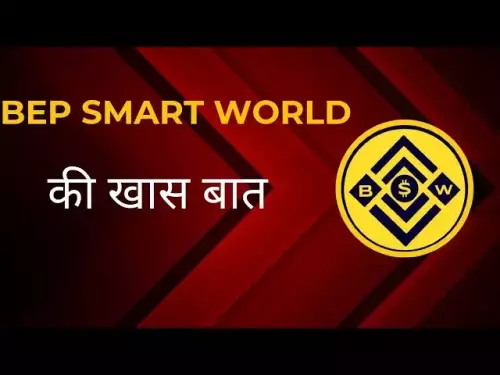-
 bitcoin
bitcoin $112195.049338 USD
2.42% -
 ethereum
ethereum $4124.915858 USD
2.81% -
 tether
tether $1.000570 USD
0.02% -
 xrp
xrp $2.861568 USD
2.25% -
 bnb
bnb $1000.346670 USD
3.04% -
 solana
solana $209.070819 USD
3.38% -
 usd-coin
usd-coin $0.999870 USD
0.02% -
 dogecoin
dogecoin $0.235379 USD
2.65% -
 tron
tron $0.335681 USD
-0.20% -
 cardano
cardano $0.803501 USD
3.38% -
 hyperliquid
hyperliquid $47.120881 USD
3.56% -
 chainlink
chainlink $21.501300 USD
3.44% -
 ethena-usde
ethena-usde $1.000571 USD
0.02% -
 avalanche
avalanche $29.793378 USD
3.62% -
 stellar
stellar $0.366964 USD
2.42%
What is the function of the insurance fund in Cardano (ADA) contracts?
Cardano's insurance funds, built into DeFi dApps via Plutus smart contracts, protect users during liquidations and defaults, with transparent, community-governed funding and mathematically verified security.
Sep 24, 2025 at 02:18 am

Understanding the Role of Insurance Funds in Cardano Smart Contracts
1. The insurance fund within Cardano's ecosystem is not a native feature directly tied to ADA or its base protocol, but rather emerges as a functional component in decentralized applications (dApps) and smart contracts built on the Cardano blockchain. These funds are typically designed to mitigate financial risks associated with contract execution, especially in lending platforms, decentralized exchanges, and derivatives protocols.
2. In protocols where users deposit assets as collateral, the insurance fund acts as a safety net during liquidation events. If the value of collateral drops sharply and the system cannot fully cover the debt through auction mechanisms, the insurance fund steps in to absorb the shortfall, protecting lenders and maintaining solvency across the platform.
3. Unlike some other blockchains where such funds are pre-funded by the protocol team or generated through token allocations, Cardano-based projects often implement transparent, community-governed models. Contributions to the fund may come from transaction fees, a portion of borrowing interest, or periodic treasury withdrawals approved by stake pool voters.
4. The deterministic nature of Plutus, Cardano’s smart contract language, allows developers to encode precise conditions under which the insurance fund can be accessed. This ensures that withdrawals are only permitted during predefined failure scenarios, reducing the risk of misuse or unauthorized access.
5. Because Cardano emphasizes formal verification and high-assurance code, the logic governing the insurance fund can be mathematically proven to behave as intended. This level of security is critical when managing pooled assets meant to protect user funds across volatile market conditions.
How Insurance Mechanisms Are Implemented in Plutus Scripts
1. Plutus enables developers to define multi-signature validation rules and time-locked spending conditions, both of which are instrumental in securing insurance pools. For example, a withdrawal from the fund might require consensus from a decentralized governance body over a set period, preventing abrupt or unilateral decisions.
2. Script validators in Plutus assess whether incoming transactions meet specific criteria before allowing fund utilization. These criteria could include proof of a defaulted loan, successful oracle price feed confirmation of under-collateralization, or completion of a failed auction process.
3. The use of redeemers and datum structures allows each interaction with the insurance fund to carry contextual data, ensuring transparency. Every claim against the fund can be traced and validated independently by any node in the network.
4. Developers can integrate off-chain components using the Cardano Application Backend (CIP-30) to monitor risk thresholds and trigger on-chain actions. When a threshold is breached, the off-chain bot can initiate a transaction that, once validated by the Plutus script, draws from the fund appropriately.
5. Since all logic is open-source and verifiable, third-party auditors and users can confirm that the fund’s operational rules align with the project’s stated risk management policies, increasing trust in the overall system.
Risk Mitigation and Decentralized Governance Models
1. Many Cardano-based DeFi platforms incorporate decentralized autonomous organization (DAO) frameworks to manage their insurance funds. Token holders vote on proposals related to fund allocation, eligibility criteria for claims, and contribution rates, ensuring community oversight.
2. To prevent centralization risks, some protocols distribute custody of the fund across multiple script-controlled addresses, each governed by different sets of rules or time delays. This fragmentation reduces single points of failure and enhances resilience against attacks.
3. Insurance funds are often sized proportionally to the total value locked (TVL) in a protocol. As adoption grows, dynamic funding models adjust contributions automatically, maintaining an adequate buffer without overburdening users.
4. In cases where a bug is discovered in a smart contract, the insurance fund may be used to compensate affected users while developers deploy fixes. This function mirrors traditional software liability but operates transparently on-chain.
5. Regular stress testing and simulation of black swan events help determine optimal fund levels. These simulations are sometimes encoded into auxiliary Plutus scripts that analyze historical data and projected volatility to recommend adjustments.
Common Questions About Cardano Contract Insurance Funds
Q: Can anyone withdraw from a Cardano dApp’s insurance fund?A: No. Access is strictly controlled through Plutus script logic, requiring specific conditions like verified defaults or governance approvals before any disbursement occurs.
Q: Are insurance funds mandatory for all Cardano smart contracts?
A: They are not mandatory. Their implementation depends on the risk profile of the application. High-value financial dApps are more likely to include them than simple utility contracts.
Q: How is the size of an insurance fund determined?
A: It is typically based on risk modeling, including factors like maximum potential loss per event, historical default rates, asset volatility, and the total volume of active positions.
Q: What happens if the insurance fund is depleted?
A: Protocols usually have fallback mechanisms such as emergency minting, temporary service suspension, or treasury reallocation to restore coverage and maintain operational integrity.
Disclaimer:info@kdj.com
The information provided is not trading advice. kdj.com does not assume any responsibility for any investments made based on the information provided in this article. Cryptocurrencies are highly volatile and it is highly recommended that you invest with caution after thorough research!
If you believe that the content used on this website infringes your copyright, please contact us immediately (info@kdj.com) and we will delete it promptly.
- Navigating Misinformation: Ensuring Safety in the Pi Network Ecosystem
- 2025-09-29 14:25:13
- XRP Price Prediction: September 29th's Crypto Comeback?
- 2025-09-29 14:25:13
- Polkadot vs. Lyno AI: Decoding the Price Forecast and AI Revolution
- 2025-09-29 14:30:01
- Trump's Brahmastra: Can Stable Coin Save the US Economy?
- 2025-09-29 14:45:17
- Pi Movement: Utility, Community, and the $314,159 Dream
- 2025-09-29 14:45:17
- Ruvi AI: Revolutionizing the Creator Economy with AI-Powered Crypto
- 2025-09-29 14:30:01
Related knowledge

How do I use the scheduled order feature in Cardano (ADA) contracts?
Sep 28,2025 at 10:18pm
Understanding Scheduled Orders in Cardano Smart ContractsCardano operates on a proof-of-stakes consensus mechanism and uses the Plutus scripting langu...

How do I enable the "scalping-only" mode for Cardano (ADA) contracts?
Sep 24,2025 at 03:19am
Understanding Scalping Strategies in Crypto Derivatives1. Scalping in cryptocurrency trading refers to executing multiple short-term trades within min...

What is the settlement time for Cardano (ADA) contracts?
Sep 28,2025 at 04:18am
Understanding Cardano's Contract Settlement Mechanism1. Cardano operates on a proof-of-stake consensus model known as Ouroboros, which fundamentally i...

How do I add margin to Cardano (ADA) contracts?
Sep 27,2025 at 07:54pm
Understanding Margin in Cardano (ADA) Smart ContractsCardano operates on a proof-of-stake blockchain that supports smart contracts through its Plutus ...

What is the maximum position limit for Cardano (ADA) contracts?
Sep 23,2025 at 11:00pm
Understanding ADA Futures and Derivatives Market Structure1. Cardano (ADA) futures contracts are offered by several major cryptocurrency derivatives e...

What is the maker fee for Cardano (ADA) contracts?
Sep 26,2025 at 09:01am
Understanding Maker Fees in Cardano (ADA) Contracts1. The concept of maker fees applies broadly across decentralized exchanges and smart contract plat...

How do I use the scheduled order feature in Cardano (ADA) contracts?
Sep 28,2025 at 10:18pm
Understanding Scheduled Orders in Cardano Smart ContractsCardano operates on a proof-of-stakes consensus mechanism and uses the Plutus scripting langu...

How do I enable the "scalping-only" mode for Cardano (ADA) contracts?
Sep 24,2025 at 03:19am
Understanding Scalping Strategies in Crypto Derivatives1. Scalping in cryptocurrency trading refers to executing multiple short-term trades within min...

What is the settlement time for Cardano (ADA) contracts?
Sep 28,2025 at 04:18am
Understanding Cardano's Contract Settlement Mechanism1. Cardano operates on a proof-of-stake consensus model known as Ouroboros, which fundamentally i...

How do I add margin to Cardano (ADA) contracts?
Sep 27,2025 at 07:54pm
Understanding Margin in Cardano (ADA) Smart ContractsCardano operates on a proof-of-stake blockchain that supports smart contracts through its Plutus ...

What is the maximum position limit for Cardano (ADA) contracts?
Sep 23,2025 at 11:00pm
Understanding ADA Futures and Derivatives Market Structure1. Cardano (ADA) futures contracts are offered by several major cryptocurrency derivatives e...

What is the maker fee for Cardano (ADA) contracts?
Sep 26,2025 at 09:01am
Understanding Maker Fees in Cardano (ADA) Contracts1. The concept of maker fees applies broadly across decentralized exchanges and smart contract plat...
See all articles










































































